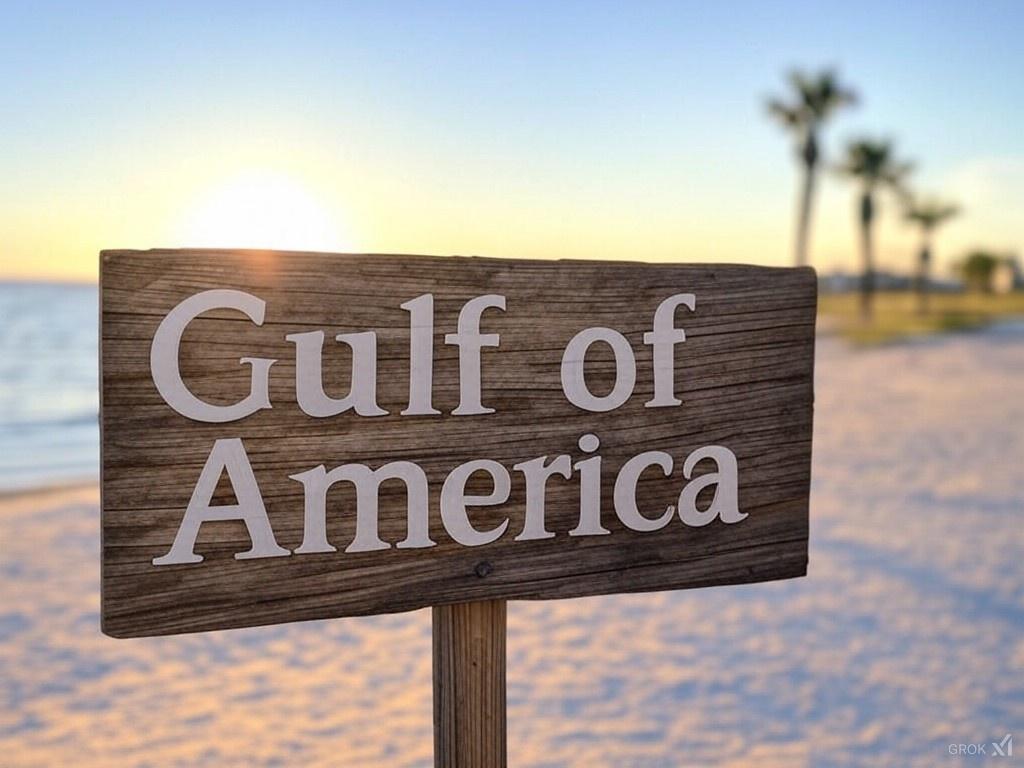January 8, 2025 – In a bold declaration from Mar-a-Lago, President-elect Donald Trump announced plans to rename the Gulf of Mexico to the “Gulf of America,” a move he describes as having “a beautiful ring to it.” This proposal has sparked a flurry of reactions across political and cultural lines, with some viewing it as an emblematic gesture of American nationalism, while others see it as a potentially contentious international move.
During a recent press conference, Trump articulated his vision for the renaming, emphasizing that it would be “appropriate” due to the United States’ significant involvement in the region. He stated, “We’re going to be changing the name of the Gulf of Mexico to the Gulf of America, which has a beautiful ring that covers a lot of territory.” This statement comes in the wake of his critique of Mexico as a “very dangerous place” and his ongoing narrative regarding immigration policies. Representative Marjorie Taylor Greene has already pledged to draft legislation to facilitate this change, signaling quick political support for Trump’s initiative.

The Gulf of Mexico spans an area of over 600,000 square miles, bordered by the United States to the north, Mexico to the west and south, and Cuba to the southeast. In terms of shoreline, Mexico holds the longest coastline along the Gulf, with approximately 1,743 miles. This is followed by the United States, which has around 1,631 miles of coastline touching the Gulf across states like Florida, Alabama, Mississippi, Louisiana, and Texas.
Here’s a breakdown of the shoreline along the Gulf of Mexico:
- Mexico: 1,743 miles
- United States: 1,631 miles
- Cuba: A smaller but significant portion compared to the others.
Advocates for the name change argue that it symbolizes American dominance and stewardship over the region, particularly given the economic and environmental significance of the Gulf to the U.S. The Gulf of Mexico is not only vital for its oil and gas production, which accounts for a substantial portion of U.S. energy resources, but also for its fishing industry, contributing significantly to the nation’s seafood supply. Furthermore, the tourism industry along the American Gulf Coast generates billions in revenue, reinforcing the economic argument for renaming. Critics, however, point out that such a change would require international agreement since the Gulf is a shared body of water, and it might provoke diplomatic tensions, especially with Mexico.
Reactions to Trump’s proposal have been diverse. Some domestic supporters applaud the move as a patriotic gesture, enhancing national identity. On platforms like X, there’s a mix of humor and support, with some users even speculating on potential new nicknames or memes. However, skepticism prevails regarding the practicality and international legality of such a name change, given that bodies like the International Hydrographic Organization would need to be involved. Posts on X reflect a general sentiment of the proposal being more symbolic than substantive, with many questioning why this is a priority for the new administration.
While Trump’s pledge to rename the Gulf of Mexico to the “Gulf of America” might resonate with his base as a statement of national pride, the execution of such a policy would involve navigating complex international waters, both literally and metaphorically. Whether this will come to fruition remains to be seen, but it certainly sets the tone for what could be an administration focused on redefining America’s role in global geography.

